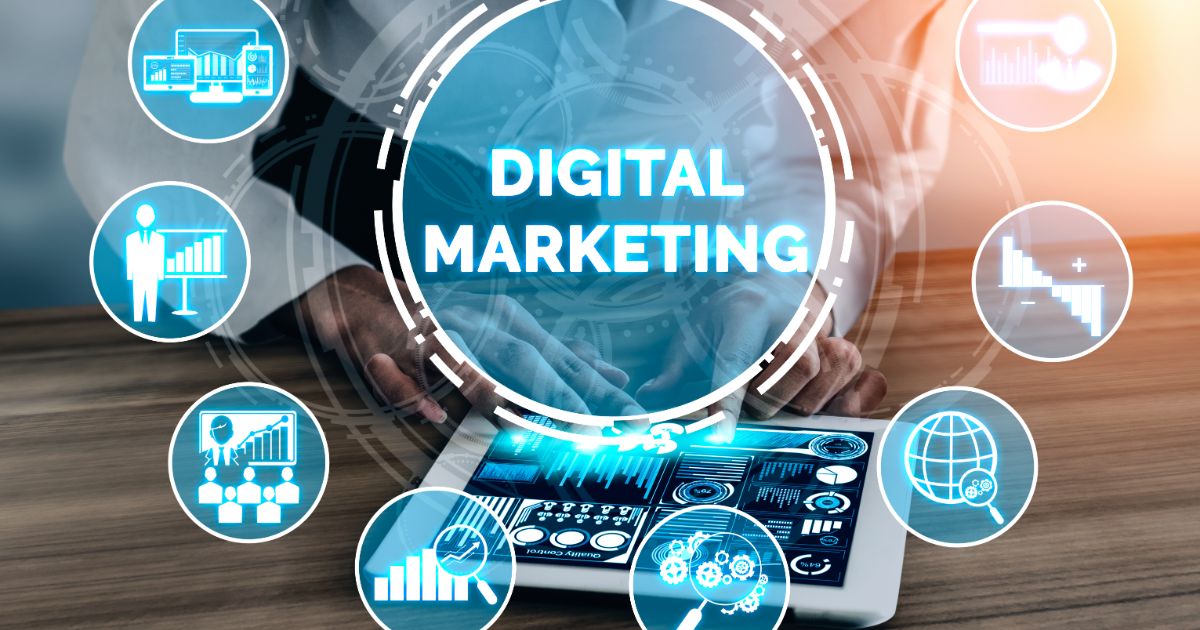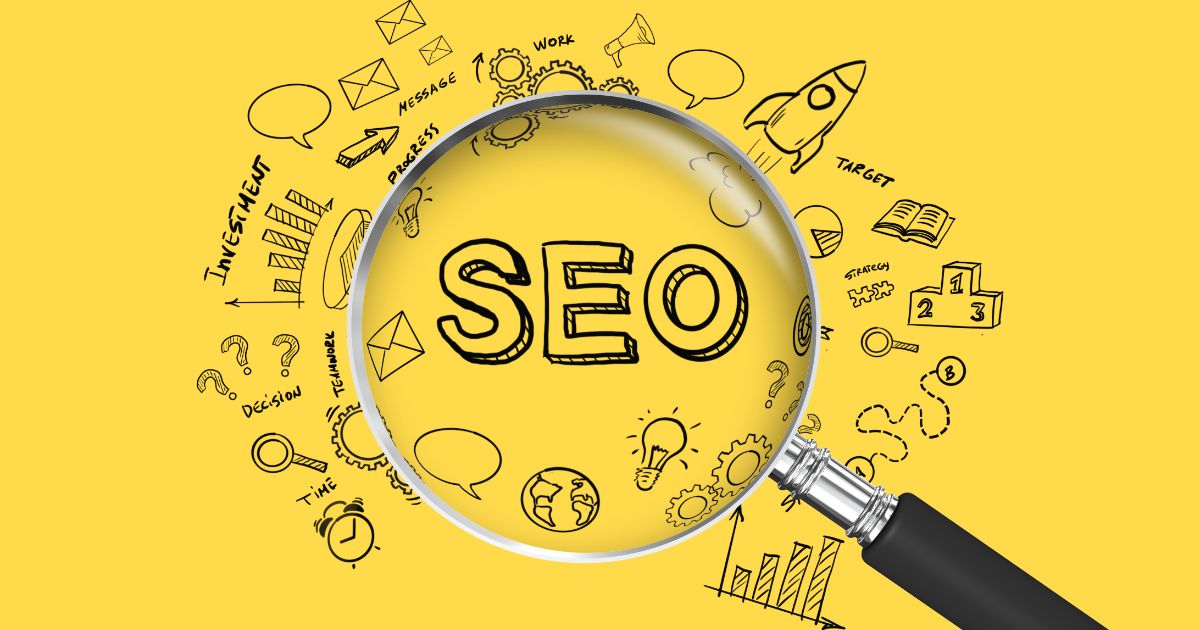What is Digital Marketing? The Complete Guide For Beginners
In today's digital age, businesses of all sizes rely on effective marketing strategies to reach and engage their target audience. Digital marketing has emerged as a powerful tool for connecting with customers, building brand awareness, and driving growth.
This article delves into the key components, benefits, and challenges of digital marketing, shedding light on its transformative power and the strategies that define its success in the digital age.
What is Digital Marketing?

Digital marketing is the umbrella term for all marketing efforts that utilize digital technologies to connect with and engage customers. It encompasses a wide range of strategies and tactics, including search engine optimization (SEO), social media marketing, content marketing, pay-per-click (PPC) advertising, email marketing, and more. Unlike traditional marketing, which often relies on print media, television, and radio, digital marketing uses online platforms and tools to connect with a targeted audience in real-time.
With the proliferation of the internet and the increasing importance of digital devices in daily life, digital marketing has become a crucial component of modern business strategies.
Key Components of Digital Marketing
Here are the core components that form the foundation of a successful digital marketing campaign:
Search Engine Optimization (SEO)

Google defines “Search engine optimization is the process of making your site better for search engines. It's also the job title of a person who does this for a living: We just hired a new SEO to improve our presence on the web.
If you have a website on an automated web hosting platform like Blogger, Wix, or Squarespace, or run a small business and don't have much time to put into your website, it's worth learning the basics of managing your presence in search engines. A little knowledge can go a long way toward helping people find your site.”
To simplify, we can categorize it into five main components:
Keyword Research
Keyword research is a process identifying the search terms and phrases that potential customers use when looking for products or services similar to what your business offers. Effective keyword research can target the right audience and optimize content around these terms.
On-Page SEO
On-page SEO refers to optimizing individual web pages to rank higher and earn more relevant traffic. Key elements include crafting descriptive and keyword-rich title tags, writing concise meta descriptions that summarize the page content and include target keywords, structuring content with appropriate heading tags to improve readability and SEO, creating clean and descriptive URLs that contain relevant keywords, producing high-quality and engaging content that addresses the search intent of users, and using alt tags and descriptive filenames for images to improve their visibility in search engines.
Technical SEO
Technical SEO focuses on the backend aspects of a website to ensure it meets search engine criteria for crawling and indexing. Website is optimized by fast load times for better user experience and higher rankings, optimizing the site for mobile devices, creating and submitting an XML sitemap to help search engines understand the site structure and index content efficiently, using a robots.txt file to control which pages search engines should or should not crawl, and implementing HTTPS to secure data and boost rankings.
Off-Page SEO
Off-page SEO is a series of activities outside the website to improve its authority and ranking. It encompasses acquiring high-quality backlinks from reputable websites to enhance the site’s credibility and authority, promoting content on social media platforms to increase visibility and attract more traffic, and writing articles for other reputable websites in exchange for backlinks to your site.
Local SEO
Local SEO specifies optimizing a website to attract local customers. This component creates and optimizes a Google My Business (GMB) listing to improve visibility in local search results, making the business's name, address, and phone number (NAP) consistent across various online directories, and encouraging satisfied customers to leave positive reviews on platforms like Google and Yelp.
Search Engine Marketing (SEM)

Search Engine Marketing (SEM) is a digital marketing strategy used to increase the visibility of a website in search engine results pages (SERPs) through paid advertising. Unlike SEO, which focuses on organic search results, SEM purchases ads on search engines like Google, Bing, and Yahoo to drive targeted traffic to a website. SEM is a momentous component of a comprehensive digital marketing strategy, enabling businesses to quickly reach potential customers who are actively searching for products or services.
Let's break down the key components:
Pay-Per-Click (PPC) Advertising
PPC is the most common form of SEM. Advertisers bid on specific keywords related to their business, and their ads appear in the search results when users search for those keywords. The advertiser pays a fee each time someone clicks on their ad. Google Ads is the most popular PPC platform.
Keyword Research
Identifying the right keywords for ads is shown to a relevant audience. Tools like Google Keyword Planner support advertisers find high-traffic and low-competition keywords.
Ad Copy and Design
Creating compelling ad copy and design attracting clicks. Ads should be clear, concise, and highlight the unique selling points of the product or service. Including a strong call-to-action (CTA) can improve click-through rates.
Landing Pages
The landing page should be relevant to the ad, supply valuable information, and include a clear CTA. A seamless user experience on the landing page can improve conversion rates and reduce bounce rates.
Quality Score
Search engines like Google use a Quality Score to evaluate the relevance and quality of SEM ads. A higher Quality Score can lead to better ad placements and lower costs per click. Factors influencing Quality Score consist of ad relevance, expected click-through rate, and landing page experience.
Content Marketing
Content marketing is a strategic approach that specifies creating and distributing valuable, relevant, and consistent content to attract and engage a clearly defined audience. The ultimate goal of content marketing is to drive profitable customer actions, such as conversions, loyalty, and advocacy. Content marketing provides informative, educational, or entertaining content to build trust and credibility with the audience.
Social Media Marketing

Social media marketing leverages platforms like Facebook, Instagram, X, LinkedIn, and others to promote products or services, engage with customers, and build brand awareness.
Social media marketing (SMM) encompasses various strategies and tactics to connect with the target audience, build brand awareness, and drive engagement.
Social Media Strategy
A well-defined social media strategy is essential for a successful SMM. It includes setting goals, identifying the target audience, choosing the right platforms, and planning content and campaigns that align with business objectives.
Content Creation and Sharing
You can create a variety of content formats such as images, videos, articles, infographics, polls, and live streams. Consistently sharing relevant content aids in building a community and maintaining active engagement.
Audience Engagement
Social media platforms facilitate direct interaction with the audience through likes, comments, shares, and messages. So you should engage with followers by responding to comments, addressing inquiries, and participating in conversations - an effective way to build relationships and strengthen brand loyalty.
Influencer Marketing
Collaborating with influencers who have a large and engaged following on social media can reach a broader audience and build credibility. Influencers promote products or services through sponsored content, reviews, or endorsements, leveraging their influence to drive engagement and sales.
Community Management
Managing a social media community has the effect of nurturing relationships with followers, addressing customer feedback and complaints promptly, and fostering a positive brand image. Building a loyal and engaged community can lead to advocacy and word-of-mouth referrals.
Email Marketing

Email marketing remains a cornerstone of digital marketing strategies due to its effectiveness in reaching and engaging target audiences directly. Email marketing is an effective way to send commercial messages to a group of people via email. These messages can include promotional content, newsletters, updates, and more, all aimed at building customer relationships, increasing brand awareness, driving sales, and promoting customer loyalty.
Mobile Marketing
Mobile marketing encompasses a range of strategies aimed at engaging users via smartphones, tablets, and other mobile devices. It leverages the ubiquity and personal nature of mobile technology to deliver targeted messages, promotions, and experiences directly to consumers wherever they are. Key channels include mobile apps, optimized websites, SMS marketing, mobile advertising, and location-based services. These channels enable businesses to reach a broad audience and interact with them in real-time, fostering higher engagement and responsiveness compared to traditional marketing methods.
One of the primary advantages of mobile marketing is its ability to deliver personalized content based on user preferences and behaviors. Mobile apps, in particular, offer businesses a dedicated platform to provide value-added services, content, and loyalty programs. Moreover, mobile marketing campaigns can be highly measurable through analytics tools, allowing businesses to track and optimize their strategies based on real-time data insights.
As mobile technology continues to evolve, future trends such as artificial intelligence (AI), augmented reality (AR), and 5G connectivity promise to further transform and innovate the landscape of mobile marketing, bringing new opportunities for businesses to engage and delight their mobile audience.
Affiliate Marketing

Affiliate marketing is a performance-based marketing strategy where businesses reward affiliates for bringing customers through the affiliate's marketing efforts. Affiliates earn a commission for each sale or lead they generate.
Key Components of Affiliate Marketing include:
Affiliate Networks and Platforms
Affiliate networks act as intermediaries between merchants and affiliates, facilitating the tracking of referrals, payments, and performance metrics. Popular affiliate networks encompass Amazon Associates, ShareASale, CJ Affiliate (formerly Commission Junction), and Rakuten Advertising.
Affiliate Partnerships
Affiliates can be individuals, bloggers, influencers, content creators, review sites, and niche websites with relevant audiences. They promote products or services through various channels, for instance, websites, blogs, social media, email newsletters, and YouTube channels.
Commission Structures
Merchants define commission structures based on predetermined actions, such as sales, leads, clicks, or sign-ups generated through affiliate links. Commission rates vary by industry, product type, and affiliate performance.
Affiliate Marketing Content
Affiliates create content that promotes merchants' products or services to their audience. Content formats include product reviews, comparison articles, tutorials, sponsored posts, banners, and affiliate links embedded within the content.
Benefits of Digital Marketing

Digital marketing offers numerous benefits to businesses of all sizes and industries, enabling them to reach and engage their target audience effectively. Here are some of the key benefits:
Global Reach and Accessibility
Digital marketing supports businesses to reach a global audience through various online channels, including websites, search engines, social media platforms, and mobile apps. This accessibility facilitates brand visibility and expands market reach beyond geographical boundaries.
Targeted Audience Segmentation
Digital marketing assists precise audience targeting based on demographics, behaviors, interests, and purchase intent. Marketers can create personalized campaigns that resonate with specific audience segments, increasing relevance and engagement.
Cost-Effective Marketing Solutions
Compared to traditional marketing methods like print advertising or TV commercials, digital marketing submits more cost-effective solutions. Businesses can allocate budgets strategically, optimize spending through analytics, and achieve higher ROI by targeting qualified leads.
Marketers can measure key performance indicators (KPIs) such as website traffic, conversion rates, click-through rates (CTRs), and return on ad spend (ROAS), allowing for data-driven decision-making and optimization.
Enhanced Brand Awareness and Visibility
Online platforms and digital channels amplify brand visibility, permitting businesses to build and strengthen their brand presence. Engaging content, social media interactions, and SEO strategies contribute to increasing brand awareness among target audiences.
Customer Engagement and Interaction
Digital marketing fosters direct and interactive communication with customers through social media, email marketing, and personalized messaging. Businesses can engage with audiences in real time, respond to inquiries, and build relationships.
Flexible and Scalable Campaigns
Digital marketing campaigns are flexible and adaptable to changing market trends, consumer behaviors, and business objectives. Marketers can adjust strategies, modify content, and optimize campaigns in real time to maximize performance and scalability.
Integration with Multiple Channels
Digital marketing integrates seamlessly with various online channels and platforms, creating cohesive multi-channel marketing strategies. Businesses can leverage synergies across websites, social media, email, search engines, and mobile apps to maximize reach and impact.
Improved Conversion Rates
Targeted and personalized digital marketing campaigns increase the likelihood of converting leads into customers. Optimized landing pages, compelling calls-to-action (CTAs), and tailored content resonate with prospects at different stages of the buyer's journey, driving higher conversion rates.
Competitive Advantage and Innovation
Digital marketing empowers businesses to stay competitive by adopting innovative tools, technologies, and strategies. Continuous optimization, market analysis, and staying ahead of digital trends position businesses for sustained growth.
Challenges in Digital Marketing

Digital marketing, while offering numerous benefits, also presents several challenges that businesses must navigate effectively. Here are some key challenges in digital marketing:
Increased Competition
The digital landscape is highly competitive, with businesses vying for attention across various online channels. Standing out amidst competitors requires unique value propositions, compelling content, and differentiated marketing strategies.
Besides, the abundance of online content has led to content saturation, making it challenging for brands to capture and retain audience attention. Maintaining high-quality, relevant content that adds value to the target audience is crucial for engagement and brand credibility.
Constant Technological Changes
Rapid advancements in technology, algorithms, and digital platforms necessitate continuous adaptation and learning. Marketers must stay updated with evolving trends, SEO algorithms, social media algorithms, and emerging technologies to remain competitive.
Data Privacy and Compliance
Stricter regulations, such as the General Data Protection Regulation (GDPR) and the California Consumer Privacy Act (CCPA), impose requirements on data collection, usage, and user consent. Marketers must adhere to data privacy laws, ensure transparency, and implement robust data protection measures.
Ad Blocking and Ad Fatigue
Consumers increasingly use ad-blocking software to avoid intrusive advertisements, impacting ad visibility and effectiveness. Marketers need to create non-intrusive, relevant ads and focus on providing value to engage audiences effectively.
Attribution and ROI Measurement
Attribution modeling remains a challenge in digital marketing, as multiple touchpoints influence customer journeys. Determining the contribution of each marketing channel to conversions and calculating accurate return on investment (ROI) requires sophisticated analytics and attribution models.
Budget Constraints and Resource Allocation
Allocating sufficient budgets across diverse digital channels while making sure optimal resource utilization poses challenges. Marketers must prioritize channels based on performance metrics, customer acquisition costs, and campaign objectives to maximize ROI.
Cybersecurity Threats and Fraud
Digital marketing is susceptible to cybersecurity threats, for example, data breaches, phishing attacks, and ad fraud. Protecting sensitive customer information, securing online transactions, or implementing fraud detection measures for maintaining trust.
Talent Acquisition and Skills Gap
Recruiting and retaining digital marketing talent with expertise in analytics, SEO, content marketing, and emerging technologies can be challenging. Bridging skills gaps through training, upskilling programs, and collaboration with specialized agencies is essential for staying competitive.
Integration of Marketing Technologies
Integrating and managing diverse marketing technologies, such as CRM systems, marketing automation platforms, and analytics tools, requires technical expertise and effective cross-functional collaboration. Seamless integration guarantees data consistency, workflow efficiency, and holistic campaign management.
Conclusion
Digital marketing stands as a cornerstone of modern business strategy, offering unparalleled opportunities for brands to engage with their audiences on a global scale. By harnessing the power of SEO, social media, content creation, and data-driven analytics, businesses can not only enhance their visibility but also build lasting relationships with consumers.
However, navigating the complexities of digital marketing requires agility and a deep understanding of evolving trends and technologies. Despite challenges such as data privacy concerns and competition for audience attention, the benefits — from precise targeting and measurable ROI to enhanced customer engagement — far outweigh the risks. As digital marketing continues to evolve, embracing innovation and adapting strategies will be key to staying ahead in a dynamic and competitive online marketplace.
To understand this indispensable tool for achieving business success, register for the Skilltrans course now! We have many courses on digital marketing in particular and marketing in general that can upgrade your knowledge according to industry trends.

Meet Hoang Duyen, an experienced SEO Specialist with a proven track record in driving organic growth and boosting online visibility. She has honed her skills in keyword research, on-page optimization, and technical SEO. Her expertise lies in crafting data-driven strategies that not only improve search engine rankings but also deliver tangible results for businesses.



